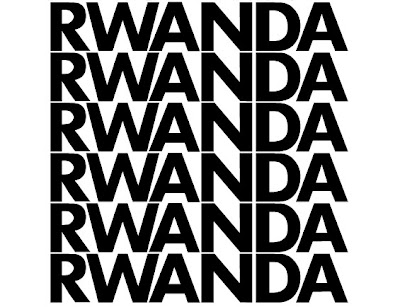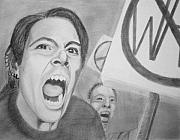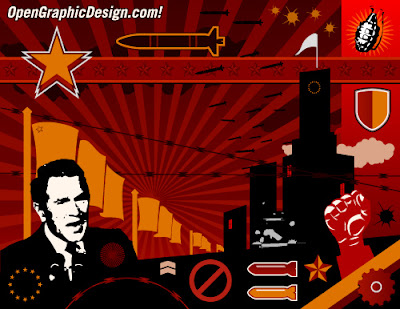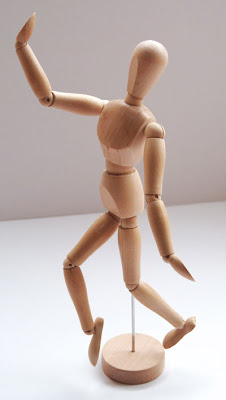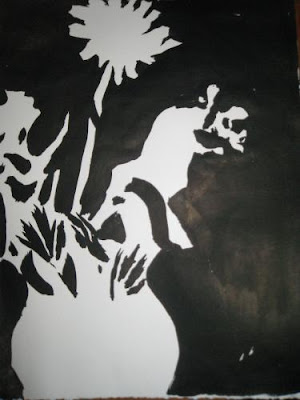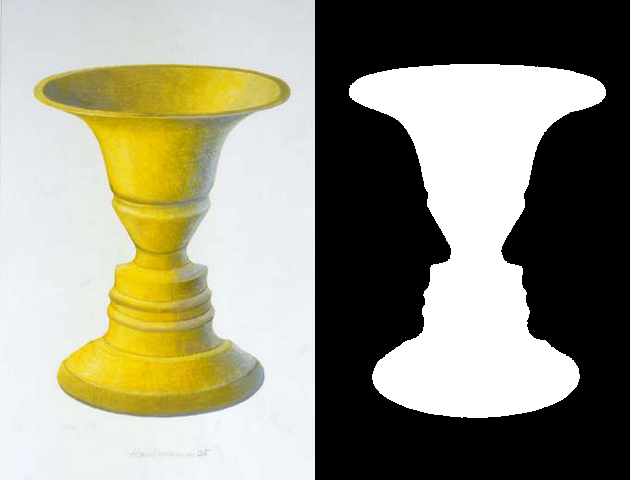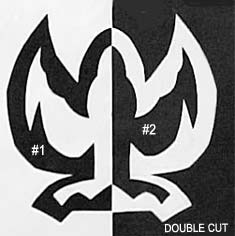Wednesday, December 9
AIM: What are the different ways we can represent ourselves in a self-portrait? DO NOW: Yesterday we looked at the work of Frida Khalo and discussed the concept of theme and identity. What do you want to show about yourslef in this self portrait? How do you want to create yourself? Will it be exadgerated? Will it be realistic? Will it be emotional? Powerful? Take a look at a short slideshow of self-portraits and lets talk about what you think the artists were doing with their self portrait. Use these as influnces in your own work. Today's Activities: Today we will be sketching out a rough draft of our self portrait or we will begin the actual drawing process. We will decide on theme, layout and content. Please remember, if you need any supplies, imagines, magazines etc you need to bring them to class tomorrow. We have a limited amount of references that we can use in teh classroom so come prepared please!
Tuesday, December 7
AIM: How will understanding the properties of watercolor help us to use the material? DO NOW: What has been your experience with watercolor? Have you used it before? What are the qualities of the paint? In your sketchbook write down four things that you remember about watercolor. For example, is watercolor transparent or opaque? Today will be the last day to complete our watercolor flowers. If you were absemt please make sure you come by during lunch or a free period to complete your work and hand it in.
Monday, December 6
AIM: How will understanding the properties of watercolor help us to use the material? DO NOW: What has been your experience with watercolor? Have you used it before? What are the qualities of the paint? In your sketchbook write down four things that you remember about watercolor. For example, is watercolor transparent or opaque? Today we will continue with our watercolor flowers
Friday, December 3
AIM: How will understanding the properties of watercolor help us to use the material? DO NOW: What has been your experience with watercolor? Have you used it before? What are the qualities of the paint? In your sketchbook write down four things that you remember about watercolor. For example, is watercolor transparent or opaque? Today's Activities: Today we will experiement with gouache, which is also spelled guache, the name of which derives from the Italian guazzo, water paint, splash or bodycolor is a type of paint consisting of pigment suspended in water. A binding agent, usually gum arabic ( natural gum made of hardened sap taken from two species of the acacia tree), is also present, just as in watercolor. Gouache differs from watercolor in that the particles are larger, the ratio of pigment to water is much higher, and an additional white pigment such as chalk is also present. Like all watermedia, it is diluted with water. We will also be using tempera paint, which also known as egg tempera, is a permanent fast drying painting medium consisting of colored pigment mixed with a water-soluble binder medium (usually a glutinous material such as egg yolk). Hopefully we remember how watercolor works. If we understand how to control the paint than we can experiment with the different effects. Today we will each take an image from the pile and attempt to replicate this image to the best of our ability. This exercise is intended to help us explore the properties of the paint and how to accomplish varying effects with both the paint itself as well as the brush.
Thursday, December 2
maycoffin@gmail.com
AIM: How can an outline help us when writing about art? DO NOW: In your sketchbook write down the word aesthetic. Is this a word that you have heard before? Do you have an idea of what it means? Take a minute and try to choose which of the following sentences best uses the term aesthetic: a. this painting has many aesthetics. b. I chose this photo because of its aesthetic qualities. c.The way the sunset was aesthetic looked really nice. Today's Activities At this point each of you should have chosen an artist that uses or has used the theme of protest in their work. The paragraph you have completed and hte research you have done should help you as we go over the Super Handy Essay Writing Guide. In class we will begin to fill out our worksheet after we discuss MLA citation. First thing about MLA citation: 1. The works cited page of your essay should have the heading Works Cited 2. Entries in your works cited page should be double spaced throughout, should be in alphabetical order and should be indented on the second line of each citation. 3. Every source you look at shoudl be cited in your Works Cited page, even if you don't end up using it. Rules for in-text parenthetical citation:
The Modern Language Association (MLA) guidelines require that you cite the quotations, summaries, paraphrases, and other material used from sources within parentheses typically placed at the end of the sentence in which the quoted or paraphrased material appears. The parenthetical method replaces the use of citational footnotes. These in-text parenthetical citations correspond to the full bibliographic entries found in a list of references at the end of your paper. (Note that the titles of works are italicized, rather than underlined.) Unless otherwise indicated, on-line sources follow the same pattern as print versions.
Single author named in parentheses.
The tendency to come to terms with difficult experiences is referred to as a "purification process" whereby "threatening or painful dissonances are warded off to preserve intact a clear and articulated image of oneself and one’s place in the world" (Sennett 11).
Single author named in a signal phrase.
Social historian Richard Sennett names the tendency to come to terms with difficult experiences a "purification process" whereby "threatening or painful dissonances are warded off to preserve intact a clear and articulated image of oneself and one’s place in the world" (11).
Web page.
Abraham Lincoln's birthplace was designated as a National Historical Site in 1959 (National Park Service).
Note: Internet citations follow the style of printed works. Personal or corporate author and page number should be given if they exist on the website.
Let's take a mintute and go back to our do now. AESTHETIC. What do you think it means?
The definition of aesthetic is: a particular theory or conception of beauty or art : a particular taste for or approach to what is pleasing to the senses and especially sight. Let's look back at the sentances. Which one did you pick and why?
QUIZ TIME! (if you were absent this day you missed an open note quiz on MLA citation, please make sure you make this up)
DUE TOMORROW! You Super Handy Essay Writing Guide. I want a chance to look these over before you begin writing so that I know you are on the right track :) I will hand them back next week and your essay will be due the Wednesday before Christmas.
Wednesday, December 1
AIM: How do we decide when a composition is complete? DO NOW: Is there any white space left in your composition? If so, is it intentional? How can you fill in this space? Color? Images? Drawing? Often white space in a composition can make it look unfinished, depending on where it is. Look at your work and try to decide if it is finished. Would you hang it on your wall? Today's Activities
Tuesday, November 30
AIM: How can different materials convey different ideas? DO NOW: Take a look at the work you have completed so far. What kind of materials can you use to further enhance your idea? For example, what color could you use to express excitement? What about misery? What additional materials can you add to what you have? Should you use collage? String? Charcoal? Should you tear the paper? Scratch it? Cut it? Today's Activities: Today we will continue working on our protest piece. This piece will be due tomorrow at the end of class. If you finish early please begin working on your sketchbook homework for next week. IMPORTANT! This is a short project inteded to experiment with the theme of protest. You will have until Wednesday to complete this project. For class TOMORROW you to have chosen an artist to write your essay on. You should have a completed paragraph explaining to me who this artist is, where they come from, what kind of medium they work in (for example are they a painter, performance artist, sculptor etc) what the title of the work you are discussing is, how the work looks, what it stands for and why the artist made the decisions that they made. The format for this essay will be discussed in class and guidelines will be posted on this website.
Monday, November 29
AIM: How can looking at the work of other artists inspire and influence our own work?
DO NOW: Before break we began looking at and discussing the importance of theme in our work. Every working artist begins with a theme that is the motivation for their work. What theme would you choose for an upcoming project?
Please review the guidelines for the mini project that we began before break: 1. You must choose an image made in your sketchbook from this semester. 2. You must draw into, add onto and transform this image so that is visually communicates a message or an idea. This idea should be directly related to an issue that you feel very strongly about, wish to protest or wish to draw outside attention to. 3. You need to use at least three different materials when working back into this image. For example, if your original drawing was a blind contour of your hand in pencil, add pen, pastel, colored pencil, charcoal, ink or collage elements. *The goal of this exploration is to experiment with visual thinking. Thus far you have been practicing with new techniques and skills in drawing. It is now time to put those skills to use and think like an artist. I want this compostition to stand on its own, meaning I want to look at it and feel what you are feeling, think what you are thinking and see what you are seeing. IMPORTANT! This is a short project inteded to experiment with the theme of protest. You will have until Wednesday to complete this project. For class on Wednesday you also need to have chosen an artist to write your essay on. The format for this essay will be discussed in class and guidelines will be posted on this website.
Tuesday, November 23
AIM: How can the elements and principles help us visually communicate an idea? DO NOW: Take a minute and flip think about all of the issues associated with out theme. There are issues of war, abuse, corruption, complaisence, homocide, genocide, environment, politics, governemnt etc. Please write a short paragraph on what area have you chosen to focus on and why do you think it is important. What do you want people to see, think and feel when they look at your work? Today's Activities: Today we will be looking at work by artists that successfully communcates and idea. Included is a list of artsist that you may research and choose from if you are interested in their work. Here is an example of the work of Alfredo Jaar: "These posters, scattered around the streets and squares of Malmo, reduced the rhetoric of advertising to a cry of grief. But they also served notice on a complacent public: ‘You—in your tidy parks, on your bicycles, walking your dogs—look at this name, listen to this name, at least hear it, now: Rwanda, Rwanda, Rwanda...’ The posters were a raw gesture, produced out of frustration and anger. If all of the images of slaughter and piled corpses, and all of the reportage did so little, perhaps a simple sign, in the form of an insistent cry, would get their attention.” - Alfredo Jaar A great resorce for looking at artists work and listening to their thoughts and ideas is Art 21. Simply go to their website and you can explore artists by theme. Here is a list of artists you might be interested in researching: Guerilla Girls Paul Klein Jenny Holzer Cai Guo Quiang Alfredo Jaar Willie Bester William Kentridge Barbara Kruger Hans Haacke Nancy Spero
Monday, November 22
AIM: How can we effectively communicate big ideas visually? DO NOW: Take a minute and flip through your sketchbook. Try to find drawings that you have done in the past that you think are interesting or successful. These can be as simple as hand drawings, figure sketches, contour line or blind contour drawings. Today's Activities: 1. Today we will be looking at a number of Protest posters and thinking about how different groups and movements communicated their ideas visually. 2. We will look at Vietnam Era Protest Art. http://www.pbs.org/opb/historydetectives/investigations/808_hottown_photos.html When looking at these images look for style, pattern, contrast, language, color etc. Think about how these principles and elements draw attention to themes and ideas. 3. We will also look at the Posters made by the Black Panter Party. http://www.blackartdepot.com/blackpantherparty.htm. Please answer the following questions: 1. What do you notice about the style of the Black Panther Posters? 2. What repeating elements do you see? 3. What do you notice about the colors used? 4. What do you notice about the use of contrast? Project introduction and Summary: For the next few days we will attempt to build on previous work in order to transform it into a complete composition that successfully communicates an idea. We have kept sketchbooks in the class in order to experiement and compile work that we will now go back and manipulate, alter and transform. Take a look at the work of John Copeland, an artist that on his website showcases a number of completed sketchbooks. For Copeland, the sketchbook itself becomes the work of art. http://www.johncopeland.com/ *This work can serve as an example of what we are trying to do. See if you can identify the theme in the following works.

There are an infinite number of ways to visually communicate an idea. Look at the following images and try to identify the artists theme. How is the idea approached? What elements, principles and techniques are used?
The guidelines for this project are as follows:
1. You must choose an image made in your sketchbook from this semester.
2. You must draw into, add onto and transform this image so that is visually communicates a message or an idea. This idea should be directly related to an issue that you feel very strongly about, wish to protest or wish to draw outside attention to.
3. You need to use at least three different materials when working back into this image. For example, if your original drawing was a blind contour of your hand in pencil, add pen, pastel, colored pencil, charcoal, ink or collage elements.
*The goal of this exploration is to experiment with visual thinking. Thus far you have been practicing with new techniques and skills in drawing. It is now time to put those skills to use and think like an artist. I want this compostition to stand on its own, meaning I want to look at it and feel what you are feeling, think what you are thinking and see what you are seeing.
Friday, November 19 AIM: How do we protest? How do we draw attention to our ideas? Thursday, November 18
http://www.pbs.org/art21/series/seasonfour/protest.html
Wednesday, November 17
AIM: How do artists use protest in their work?
DO NOW: In your sketchbook please write downone issue that you would protest and how you would go about protesting this issue.
If you are absent this day you should make sure to watch this Art 21 episode available online at http://www.pbs.org/art21/series/seasonfour/protest.html.
Tuesday, November 16 AIM: What is a theme and why is a theme important in art? DO NOW: In your sketchbook please write down the definition (as you know it) of protest. Then write down three possible forms of protest, for example, a rally. Today you will be introduced to the concept of protest as a theme for artistic exploration. This is an idea that we will expand on by looking at the work of a number of artists that deal with protest in the upcoming days. After we discuss this concept students will turn in their cards and as a group we will put together the puzzles with the pieces that we have made! Monday, November 15 I am sick :( In bed. Be nice to your sub and work on your cards if you are not finished, this is technically a free extension for you! Friday, November 12
Today you will continue work on your 4 cards. These cards will be due AT THE END OF CLASS. Please be prepared to cut them out and put them together on Monday. If you are absent today, please make sure that you see me and show me the work that you have completed. Also, NO HOMEWORK DUE MONDAY! Its a free week!
Thursday, November 11
Wednesday, November 10
Tuesday, November 9
Tuesday, November 9
MIDTERM
Monday, November 8
AIM: What have we covered in class so far and how has it affected our drawing abilities? DO NOW: Make a list of concepts that we have covered in class thus far. What do you think you will find on the midterm? Today's Activities: 1. Students will begin their midterm review by thinking about what we have covered so far. 2. Concepts that will be on the midterm include: contour line composition blind contour the four forms that are the basis for all objects negative space positive space pattern proportion gesture drawing value as a tool to create form 3. There will be a short answer section followed by a 35 minute drawing portion that will begin with 1-2 minute gesture drawings and advance in time.
Friday, November 5
AIM: What is the importance of understanding proportion in this activity? DO NOW: Think carefully about the concept of part to whole. You are working on small pieces of a greater puzzle, not knowing what the outcome will be. What will happen if your measurements are not exact? Today's Activities: 1. Students should continue working on their cards.
Thursday, November 4
AIM: What can we learn through collaboration?
DO Now: Begin by tra
cing one of your squares. Now carefully begin to sketch out the contents of your square. Remember, everything needs to be exact or the puzzule pieces will not match up!
Today's Activities:
1. Students should begin working on their cards.
2. Make sure to have your squares checked before value is added, if the proportion is incorrect it will have to be fixed and this will be much harder to do once value has been added.
Wednesday, November 3
AIM: How can we learn how to draw through abstraction?
DO NOW: Intro to our puzzle!
Today's lesson is about drawing what you see and being precise with proportion. When you are trying to make something accurate, guessing is never the answer.
Today's Activities:
1. Each student will recieve 4-5 cards with images on them. There will be a letter and a number on the back.
Monday, November 1
VALUE! If you miss class today please work on a drawing of your face (lookimg in a mirror) for at least 20 minutes. Please focus on vlaue.
Friday, October 29
To make up work form today or the class of the 29th please do a number of drawings for ten minutes or more using a model. If you can't find a model use yourself and a mirror.
Thursday, October 28
gesture drawing
Wednesday, October 27
AIM: How can gesture drawing indicatemovement?
DO NOW: Today we are discussing students grades and the amount of time left before mid terms. If you are absent, PLEASE CHECK IN WITH ME TO SEE WHAT YOUR GRADE IS AND WHERE YOU STAND!
Today's Activities:
1. After we discuss grades we will review the concept of gesture drawing. You should be able to answer questions like how can you express movement in a ten second gesture drawing? Why is it important to keep your hand loose while gesture drawing? Why is the quality of line important in gesture drawing?
2. We will pick up today where we left off beginning with 2 minute gesture drawings and ending with a five minute gesture drawing. If you are working from home, have someone model for you and do 3 two minute gesture drawings of different poses and then move upto one that is 5 minutes.
Tuesday, October 26
AIM: What can gesture drawing teach us about proportion?
DO NOW: Look at the projected image and try to draw what you see. This shoudl mirror what we learned yesterday about proportion.
Today's Activities
1. Watch the following short video showing the same practice.
http://www.youtube.com/watch?v=tStMdJ11JSs&feature=fvw
2. Watch the following tutorial discusses gesture drawing.
http://www.youtube.com/watch?v=Ga6WjxaXRC0
3. Work on a number of gesture drawing using a model. These drawins should range from 10 seconds to 10 minutes.
Monday, October 25
AIM: How we can accuratly depict the human body?
DO NOW: In your sketchbook try to draw a man or a woman standing. Try to mae this as accurate as you can in terms of proportion.
Today's Activities
1. Students will look at the work they completed during their do now and discuss what proportion is and why it is important.
2. Proportion is what makes figures look realistic when you are drawing. Although you can manipulate proportion for a number of reason as we have seen with artists like Schile and Klimt, it is imporatant to know how to do something correctly before you attempt to manipulate this idea. Almost all artist who work abstractly were still trained to draw in an accurate and classical manner.
3. Students will begin to work with proportion by understandning joints and creating sausage figures.
4. Students will take a short quiz on the film spirited away.
Friday, October 22
AIM: What can we learn about art through film?
DO NOW: Discussion on the movie Spirited Away and the work of Miyazaki.
Today's Activities
1. Compare and contrast ideas realated to the film.
2. Discussion that revolves around film and television and the relationship of art to media. Essential questions: Why is film one of the most direct methods of communication? Can entertainment serve multiple purposes? How is art associated with film and media? What gives an image power? Is it possible to have an image without an idea?
3. Students will watch a clip from Pan's Labrinth.
4. Students will discuss what it takes to inspire fear (based on the clip) and or any emotion in a film.
5. Students will watch a brief animation and discuss the idea of simplicity in art.
REMINDER! Your sketchbook homework is DUE ON MONDAY. We went over it in class and it is here on the website!! Please make sure you have it completed for Monday!
Thursday, October 21
Spirited Away
Wednesday, October 20
Spirited Away
Tuesday, October 19
AIM: How can images help us to tell a story?
DO NOW: Take a moment and think about your favorite book or story. Can you imagine what it would be like as a movie? What would the charachters look like and why? Take a minute and try to do a rough sketch ofeither a scene from this book or one of the charachters.
Today's Activities
1. Discussion on the moving image and art in film and illustration.
2. Exploration of different ways art is used in film.
3. Discussion on charachter development and creation in illustration and costume design.
Monday, October 18
Your project is due at the end of class today!!
AIM: What kind of message do you think your final piece conveys?
DO NOW: Focus on what kind of details you need to complete your work. Make sure you have a title and paragraph explaining your work to go along.
Today's Activities:
1. Student will review the project requirements
2. Students will talk about artist statements and the importance of titles and content.
3. Students will watch a short documentary on South African Artist William Kentridge and dicuss how artist utilize and aproach a body of work.
Friday, October 15
PROJECT REQUIREMENTS:
1. Please remember that you need at least four differnt patterns for a passing grade.
2. You should have a minimum of six different colors.
3. Outside of your patterns should be a flat solid color that allows the patterns and negative space to stand out in contrast.
4. You need to have a title that is representative of your theme.
5. Work should be in your sketchbook and if not it should not be bent or folded. This is a FINAL PROJECT and should be presented as such.
Thursday, October 14
AIM: Is the theme that we have chosen evident in our choice of pattern and title?
DO NOW: Trade your project with the person sitting next to you. Although you are mid project, let this person assess whether or not they can infer what you are trying to communicate through your patterns and title. Is there something you should add or subtract in order to make the piece more successfull?
Today's Activities
1. Students will look at and critique one anothers work.
2. Students will discuss the concept of a critique and make sure they uderstand how to give constructive criticism.
3. Students will re assess their own work and continue to work to complete their project.
Wednesday, October 13
Hey Guys!
Today's Activities are based on wether or not we get a projector for class. I have some videos on a number of artists that I want us to begin watching on Wednesday's. For our purposes it is very important that we discuss, learn about and think about both contemporary and older artists and their work.
Art 21 is a great resource for learning about artists and the intention behind their work. All artists work with a philosophy, a theme or idea that inspires and defines their work. This semester, with our sketchbooks, we are attemting to develop our own idividual themes and ideas that should come out as we work back into our books. Whether you think of yourself as an artist or not whatever you create in this class should reflect the things that you feel, that are important to you and that you believe in.
Right now you are working on a project that is being developed out of the concept of negative space. So you have started with somthing like this:
Your goal is to end up with something like this:
Most of you are working with patterns that are on the inside or the inverse of what you see here, but this is a good example of negative space and high contrast.
We are looking at the work and ideas of other artists in order to both have a better understandning of art and art history and also to hopefully inspire and influence us in our own work.
Everything we create comes out of what we know. The more we know and the more we have access to, the more choices we have and the more intentional these choices become.
If we do not have access to a projector on this day we will discuss these ideas in class and look at the work of a South African artist, William Kentridge and his previous and upcoming work.
William Kentridge: Anything Is Possible (2010)
Premieres October 21, 2010 at 10:00 p.m. ET (check local listings)William Kentridge: Anything Is Possible gives viewers an intimate look into the mind and creative process of William Kentridge, the South African artist whose acclaimed work has made him one of the most dynamic and exciting contemporary artists working today.
I will give you 50 extra classwork points (that is 2 classwork assignments) if you are a able to watch this video and write a 2 paragraph response detailing what you have seen and what you have learned.
Tuesday October 12
AIM: How does my title reflect my theme?
DO NOW: Please write a paragraph explaining what your title is and why you have chosen it. How does it reflect the theme of your work? What does the title say about you?
Today's Activities
1. Students will discuss the status of their work and their title choices and considerations.
2. Students will be introduced to the materials available and will watch a rief demo detailing the proper way to handle and care for the materials.
3. Students will begin adding color and pattern to their negative space drawing.
Friday, October 8
AIM: What is contrast and how does it affect a composition?
DO NOW: Take a look at the work you have done so far. What makes the different parts stand out? If they do not stand out against one another what can you do to make this happen?
Today's Activities
1. Students will continue to work on their project after a discussion about composition and contrast.
Thursday, October 7
AIM: What is a pattern?
DO NOW: 1. In your sketchbook please write the definition of pattern. 2. In your sketchbooks take 10 minutes and create a simple pattern using only pencil.
Today's Activities
WOO POP QUIZ! If you are checking this website then lucky you! You will be prepared for today's pop quiz! For the quiz you need to know:
The definition of: contour line, blind contour, composition, positive space, negative space. BONUS QUESTION - do you know the definition of pattern? You will also have to draw the negative space surriounding an object of my choice.
1. Students will begin with a discussion on what pattern is and how it is used. They will compare and contrast different patterns and different pattern ideas.
2. Students will make a list of what colors they would like to use in their background and pattern. They will try to create a pattern that links to their drawing. Students will also need to decide weather to put the pattern on the inside or the outside of their composition.
3. When they are ready students will begin drawing their pattern into their work and working on their final composition
Wednesday, October 6
AIM: How can we draw negative space when looking at a positive subject?
DO NOW: Choose and image from the ones that I have aquired for you, or an image that you have chosen yourself (make sure I approve it first).
Today's Activities
1. Students will begin to draw the negative space in the image they have been assigned.
Tuesday, October 5
AIM: How can we use negative space in drawing and design?
DO NOW: In your sketchbook define shape and space. How do these two terms relate to the concept of negative space?
Today's Activities:
1. Students will begin by looking at and discusisng the work from the previous day. They will discuss negative space and positive space and identify each in the work that was produced the day before.
2. Now take a look at the image below:
You are probably familiar with this image and understand it as an optical illusion. Is it a vase or is it a face? If you focus on the shapes that the positive space makes, you see a vase, however, if you focus on the negative space you will see two profiles facing one another. Looking at the shapes that the negative space creates can help us better understand the angles and proportion of the object we are trying to draw.
3. Students will then observe a still life set up near where they are sitting. They will be asked to draw only the negative space surrounding the object. This may take multiple attempts. The main focus should be on the shapes that can be seen around the object itself. Use this drawing of the negative space surrounding a chair as an example.
Monday, October 4th
AIM: What is the difference between negative and positive space?
DO NOW: In front of you in a piece of black construction paper and a pair of scissors. The first thing you need to do is cut any kind of shape you would like to out of the paper, starting from the horizontal side.
Today's Activities:
Overview - Drawing skills can be enhanced with design practices with a pair of scissors. The free cutting of shapes encourages new and sometimes wonderfully unexpected forms which might never have been conceived by thinking only with a pencil. This exercise aimed to do just that and free students from their drawing inhibitions, giving plenty of time for experimentation.
1. A 6" X 9" construction paper can be cut on 1 side axis, both, and top and bottom if the background format allows. Above is a simple "single cut" into the left axis. The cut design (positive shape) is tuned over to the left and realigned to the axis. The white area is the negative space.
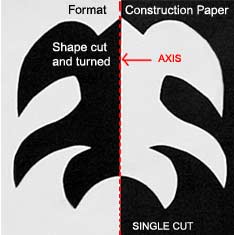
2. This demonstrates a "double cut" and follows the same beginning procedure described on the left. A large shape is cut, redesigned and cut again. The first shape (#1) is aligned to the left and the 2nd (#2) aligned to the axis on the right. Now, positive and negative shaped spaces are on both sides.
3. This display adds a "triple cut" added on to the right axis of the same large 22" x 28" board. It is created by cutting the first shape twice and alternating shapes from side to side and realigning them on the axis. The left top and bottom shapes are the single and double cuts previously shown above.
Friday, October 1st
AIM: How will blind contour help me understand drawing?
DO NOW: Take out your sketchbook and write the date on the top of the page.Title what you are doing BLIND CONTOUR #1. You are going to attempt to draw your entire hand without looking at your paper and without picking your pencil up off of the paper.
Today's Activities
1. For the do now, curl you fingers in so that when you are looking at your hand it is in an interesting position.
2. Pick a starting point and begin drawing what you see. DO NOT LOOK AT YOUR PAPER OR AWAY FROM YOUR HAND.
3. You should draw as SLOWLY as you possibly can and make sure to not pick your pencil up from the paper at any point.
4. Once you are done with this activity I will go around the room and put you in pairs. (If you are working at home to make this up get a family member to sit for you.) Once you have a partner you must repeat the same steps as you did when drawing your hand but now you will be drawing your partners face. DO NOT LOOK AT YOUR PAPER AND DO NOT PICK YOUR PENCIL UP FROM THE PAPER. This drawing should take approximately 10 to 15 minutes. Remember, you are drawing as slowly as you possibly can, looking for the outlines and the contours of the persons face.
5. Once we have completed this we will compare and contrast our drawings.
6. The final step to this exercise will be to attempt to draw the persons face but being able to look at our paper. Still, do not lift your pencil off of the paper! Try to look for connecting contours and angles.
REMINDER: Your first sketchbook homework assignment is due MONDAY OCTOBER 1st. Your sketchbooks will be collected and returned the following day.
Wednesday, September 29
AIM: What is Visual Information?
DO NOW: Please read the Article "Think Visual" by Clive Thompson from Wired Magazine, October 2010.
CLASSWORK: DUE AT THE END OF THE PERIOD (please make sure to write the date in your sketchbook so that I can give you credit for this days classwork.)
Today's Activities:
1. Please read the article silently and make sure to take notes in your sketchbook on what you are reading.
2. Look for key words or phrases that you feel touch on the main point of the article. For example, what is Clive trying to say? How does he say it? What was the problem that he encountered? How did he solve it? Do you agree or disagree with his point? What is visual information?
3. Classroom discussion on the article and on understanding visual information.
Homework: DUE FRIDAY OCTOBER 1st
Choose any of the following:
Magazine, Newspaper, Website (if it is something you find online you may write down the link, if it is a newspaper or magazine rip it out and glue it in your sketchbok)
Look for an example of visual information in any of these places. This can include flowcharts, infographics etc. Either attach the image to your sketchbook or provide me with the link so that I can look at it myself. Please respond in your sketchbook to this image. What is it? Who made it? Do you think it is a successful way to convey the information? Is it aesthetically pleasing (nice to look at)?
Here is an example of an interesting infographic that was mentioned in class today: Race Map
Friday, October 7
AIM: What is contrast and how does it affect a composition?
DO NOW: Take a look at the work you have done so far. What makes the different parts stand out? If they do not stand out against one another what can you do to make this happen?
Today's Activities
1. Students will continue to work on their project after a discussion about composition and contrast.
Tuesday October 12
AIM: How does my title reflect my theme?
DO NOW: Please write a paragraph explaining what your title is and why you have chosen it. How does it reflect the theme of your work? What does the title say about you?
Today's Activities
1. Students will discuss the status of their work and their title choices and considerations.
2. Students will be introduced to the materials available and will watch a rief demo detailing the proper way to handle and care for the materials.
3. Students will begin adding color and pattern to their negative space drawing.
Wednesday, October 13
Hey Guys!
Today's Activities are based on wether or not we get a projector for class. I have some videos on a number of artists that I want us to begin watching on Wednesday's. For our purposes it is very important that we discuss, learn about and think about both contemporary and older artists and their work.
Art 21 is a great resource for learning about artists and the intention behind their work. All artists work with a philosophy, a theme or idea that inspires and defines their work. This semester, with our sketchbooks, we are attemting to develop our own idividual themes and ideas that should come out as we work back into our books. Whether you think of yourself as an artist or not whatever you create in this class should reflect the things that you feel, that are important to you and that you believe in.
Right now you are working on a project that is being developed out of the concept of negative space. So you have started with somthing like this:
Your goal is to end up with something like this:
Most of you are working with patterns that are on the inside or the inverse of what you see here, but this is a good example of negative space and high contrast.
We are looking at the work and ideas of other artists in order to both have a better understandning of art and art history and also to hopefully inspire and influence us in our own work.
Everything we create comes out of what we know. The more we know and the more we have access to, the more choices we have and the more intentional these choices become.
If we do not have access to a projector on this day we will discuss these ideas in class and look at the work of a South African artist, William Kentridge and his previous and upcoming work.
William Kentridge: Anything Is Possible (2010)
Premieres October 21, 2010 at 10:00 p.m. ET (check local listings)William Kentridge: Anything Is Possible gives viewers an intimate look into the mind and creative process of William Kentridge, the South African artist whose acclaimed work has made him one of the most dynamic and exciting contemporary artists working today.
I will give you 50 extra classwork points (that is 2 classwork assignments) if you are a able to watch this video and write a 2 paragraph response detailing what you have seen and what you have learned.
Thursday, October 14
AIM: Is the theme that we have chosen evident in our choice of pattern and title?
DO NOW: Trade your project with the person sitting next to you. Although you are mid project, let this person assess whether or not they can infer what you are trying to communicate through your patterns and title. Is there something you should add or subtract in order to make the piece more successfull?
Today's Activities
1. Students will look at and critique one anothers work.
2. Students will discuss the concept of a critique and make sure they uderstand how to give constructive criticism.
3. Students will re assess their own work and continue to work to complete their project.
Friday, October 15
PROJECT REQUIREMENTS:
1. Please remember that you need at least four differnt patterns for a passing grade.
2. You should have a minimum of six different colors.
3. Outside of your patterns should be a flat solid color that allows the patterns and negative space to stand out in contrast.
4. You need to have a title that is representative of your theme.
5. Work should be in your sketchbook and if not it should not be bent or folded. This is a FINAL PROJECT and should be presented as such.
